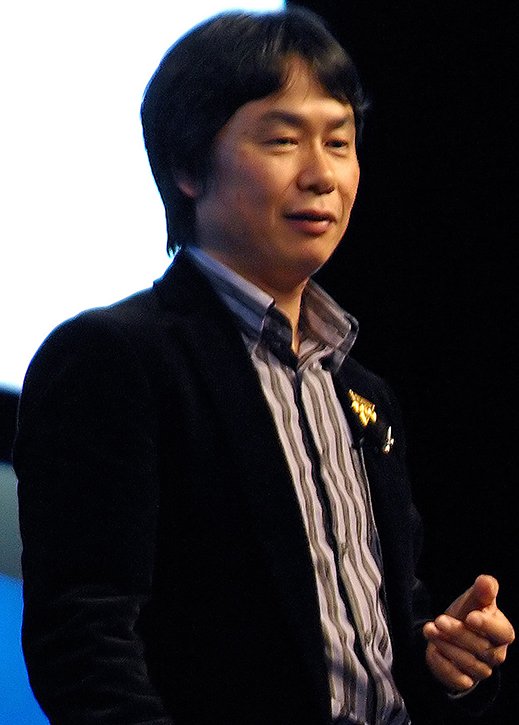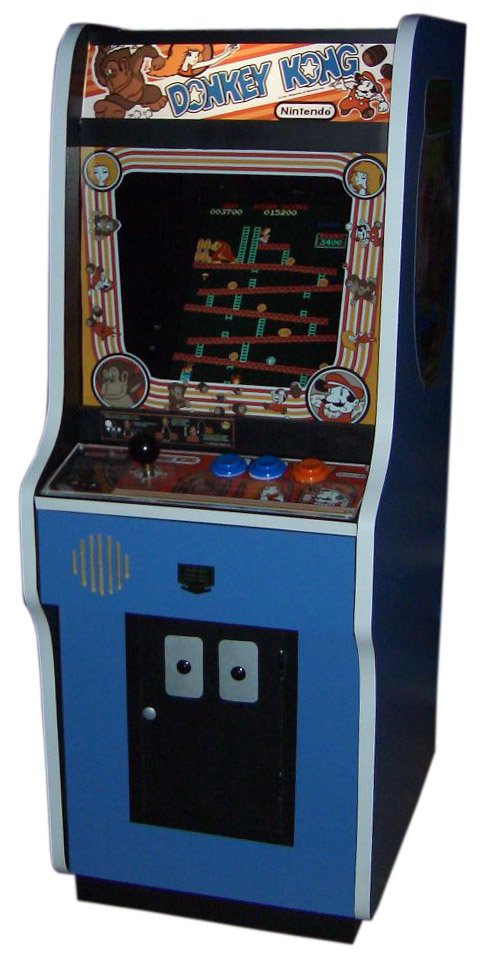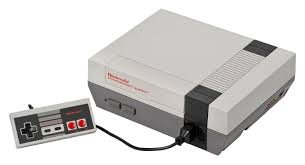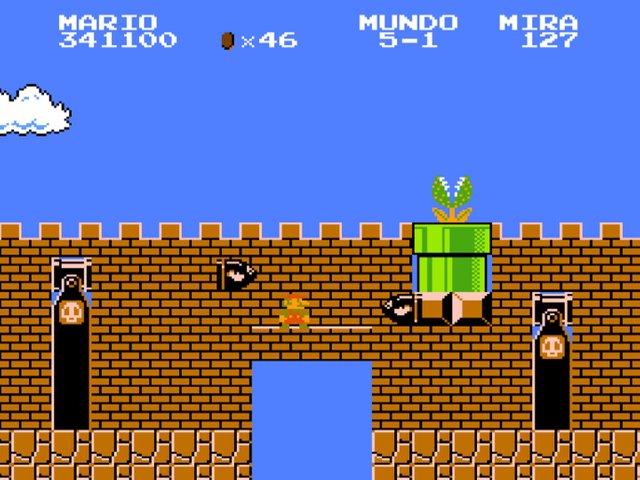Nintendo and Miyamoto: The Early Years
NINTENDO AND MIYAMOTO: THE EARLY YEARS.
INTRODUCTION
Considering the fact that videogaming was invented in the 70s, it cannot be a shock to learn that e-entertainment was not the business of Nintendo's founder, Fusajiro Yamauchi, when he formed the company in 1889. Known back then as the Marufuku company, Yamauchi's firm made Hanafuda playing cards and this was the company's line of product up until 1970. It was in this decade that other Japanese companies came into being and while Western companies like Coleco, Fairchild and Magnavox are now only remembered by game historians, eastern companies such as Namco, Capcom and Nintendo survived the videogame crash of the 80s and went on to flourish.
EARLY HISTORY
During the 50s, America helped rebuild Japan after World War II ended with the dropping of the atom bomb on Hiroshima and Nagasaki. Although the sneak attack on Pearl Harbour and the way prisoners of war suffered while building the Burma railroad lead to a general hatred of the Japanese in America, the US government felt that the rise of communism in Russia warranted an ally in the East. So America made sure that certain technological innovations were available to this blossoming capitalist country. Two of these innovations were the transistor and the integrated circuit- crucial components in every domestic electronic appliance. Although Television, video recorders and game consoles were all invented in the West, Japan proved herself to be a master of two crucial skills. One of these was miniaturisation and the other was a dedication to providing cost effectiveness by refining the manufacturing process. In essence, the Japanese were able to build televisions far more effectively than their American rivals and even though President Nixon placed restraints on the export of Japanese televisions to America in the 60s, the ultimate dominance of Japanese companies was well underway.
This is just one example of a pattern that was to be repeated several times. In the West, a new consumer device would be invented, but it would be in Japan where a meticulous workforce would refine the design process. In 1957 the Marufuku company changed its name to Nintendo (a rough translation of 'leave luck to Heaven') and by 1970 the company had turned its hand to creating toys under the leadership of Yamauchi's grandson, Hiroshi. The first toy that the company built was called the Ultra Hand. It was a robotic arm with workable fingers that enabled children to extend their reach. Nintendo also created a successful light and gun game called Beam Gun, which enabled children to knock down targets via opto-electric technology. The company made substantial profits from these products and next turned its attention to the fledgling videogame business.
For a while, a craze for bowling had swept through Japan. After it died down a lot of empty bowling alleys were lying around just waiting to be picked up. This Nintendo did, buying up the old bowling alleys and turning them into light-gun shooting galleries. This was a successful venture, but Nintendo had reduced its investment in the early arcades because of unhealthy economic conditions. Meanwhile, in the West, the first console was being sold in the form of the Magnavox Odyssey and this was also the first console to be sold by Nintendo, who bought the rights to distribute it in Japan in 1975. Two years later, with the collaboration of Mitsubishi, Nintendo developed a system that ran six variations of Pong called the TV-Game 6. This was followed by the TV-Game 15 and, in March 1978, by Computer Othello.
By 1980, Nintendo started to distribute and market arcade games to America, with Minoru Arakawa (Yamauchi's son-in-law) heading operations in New York. But early games like Radarscope were unsuccessful and the company's arcade business looked uncertain on its feet. The failure of the arcade game was a thorn in Nintendo's side and Yamauchi decided to take action. His solution was to replace the innards of Radarscope with a more successful game. The son of Yamauchi's friend, who had been taken on as a staff artist, would create it. This was Shigeru Miyamoto.
KAI SHAN

(Image from wikimedia commons)
By all accounts, Miyamoto is an extremely modest individual. He uses the term 'Kai Shan' when describing his position at Nintendo, which is the equivalent of a simple worker. But, as far as anyone who loves videogames is concerned, he is probably deserving of a grander title. Miyamoto may just be the greatest videogame creator in the world.
There is a small town in Japan called Sonebe, which is situated in the countryside outside of Kyoto. A picturesque place, with rice fields, rivers and hidden caves, it is the perfect environment for a small boy to explore and exercise his imagination. It was here, on November 16th 1952, that Shigeru Miyamoto was born. He was always a creative, artistic person, happy to read books and paint pictures. He was also actively involved in arranging puppet shows with other children. A penchant for exploration lead Miyamoto to discover the inspiration for much of his games. The young boy once came across a cave and his inquisitive nature compelled him to explore its dark secrets. However, he was also a bit timid, so it took many aborted attempts before, armed with a homemade lantern, Miyamoto explored the cave. He was delighted to discover that this cave lead to many smaller passages. It seemed the deeper he probed, the more depth the cave had. This is a feeling captured by some of Miyamoto's most beloved videogames. There are always numerous secret routes and levels to discover in games like Super Marios Brothers or Zelda. A pipe might lead to a secret horde of treasure, a painting in a castle might turn out to be a portal to a whole new world.
CAREER
It had always been Miyamoto's ambition to be an artist, so by the time he was 18 he enrolled at Kanazawa Munici College of Industrial Arts and Crafts. It took five years before he graduated, because half the time he missed classes in order to play guitar at coffee houses and parties with a banjo-playing fellow student. Miyamoto graduated in 1977 and began looking for a job. His boyhood imagination very much alive, he was naturally drawn toward the toy industry. His father was a friend of Hiroshi Yamauchi and he arranged for the Nintendo president to meet his son. Miyamoto was an artist, not a programmer, and Nintendo had no open positions for an artist. But Yamauchi nevertheless agreed to see Miyamoto as a favour to his father. Regardless of the lack of available positions for an artist, Miyamoto managed to make enough of an impression to earn a second interview. It was at this second meeting that Yamauchi recognised Miyamoto's ingenuity. The wannabe artist had arrived clutching a portfolio of ideas for toys, which impressed the Nintendo president so much that Miyamoto was hired. The visionary began life at Nintendo as an apprentice in the planning department, evaluating new ideas about to go into production. He worked on everything from toys to motors, but he was not involved in videogames.
DONKEY KONG

(Image from wikipedia)
That changed in 1980. Nintendo had come up with Radarscope and Minoru Arawaka's confidence in its success was such that he pre-ordered 3,000 units. In doing so, all the resources of Nintendo America were dependent on success. Unfortunately, the game took four months to arrive from Japan, by which time any excitement for the game had worn out. Because of this, only one-third of the 3000 units were sold and Nintendo was in dire need of a fresh new game. All the best programmers and designers were busy and Yamauchi was not about to halt their work in favour of the small American market. Instead, Miyamoto was the man appointed to change Radarscope. By now, Miyamoto had had a go on several videogames and was unimpressed by all of them. Why couldn't they have great characters like the Disney films he admired?
Miyamoto did not (and does not) do much of the programming himself. He had a team of programmers working underneath him, whose job was to commit to code whatever inspiration Miyamoto might have. These technicians held consultations with Miyamoto, who was keen to learn the limitations of the hardware and exploit it as best he could. Armed with this information, he sat down and developed a story. This tale involved a carpenter who had a beautiful girlfriend. He also owned a pet giant gorilla and this over-sized simian escaped from its cage and, out of the revenge for the way it was treated, kidnapped the girlfriend. No doubt any other game designer would have taken this narrative and turned it into yet another frenetic shooter, but not Miyamoto. Instead, he put the ape at the top of a building, and the player's job was to have the carpenter ascend to where the ape was. The incensed gorilla did not appreciate the carpenter's company, so the ape hurled barrels that would roll along and threaten to squash the carpenter unless he jumped out of the way. Thus was born the genre of the 'platform' game (where the emphasis is on the pinpoint timing of jumps) and thus was born 'Donkey Kong'. It was so-called because Miyamoto wanted a name that sounded like 'stubborn gorilla' and used an English dictionary to find a word that equated to stubborn. He choose 'Donkey'. 'Kong' was no doubt derived from 'King Kong' the classic movie starring a giant gorilla.
IT'S-A ME, MARIO
The world's first platformer went on to be a great success and Donkey Kong went on to star in many other games, becoming just one among many videogame icons that Miyamoto would create. But the carpenter went on to become an even bigger videogame star. Although he was originally thought to be a carpenter, it was pointed out by some that he was dressed more like a plumber. Miyamoto took this comment and incorporated it into a game. Also, the former carpenter turned plumber who had been christened 'Jumpman' for his Donkey Kong debut earned the new name 'Marios' after somebody noticed he rather resembled Marios Segali do Nintendo America. Along with his brother Luigis, Marios starred in 'Marios Bros', in which the two brothers explore sewers full of monsters falling out of a flume and dropping from one platform to another until they reached the bottom. If the player positioned a brother on a platform beneath the one a monster currently occupied and jumped, he would hit the platform above him and knock over the monster. So stricken, the player-character could then kick the monster off the play area. Marios Bros was released in 1983 and it proved as successful as Donkey Kong.
THE GAMES CONSOLE AND SUPER MARIO BROS

(Image from Wikimedia commons)
So far, Nintendo had been working as a successful third-party developer. But by 1983, Yamauchi realised that the modest profit licensing was bringing them was not as lucrative as controlling sales and manufacturing. Accordingly, the Nintendo president set his team of engineers to work on developing a home console that was inexpensive yet superior to the competition. What they came up with was the Famicom, shorthand for Family Computer. By 1984, 90% of the home videogame market was controlled by Nintendo. The same year, Nintendo decided to target the US market with a re-designed Famicom called the Nintendo Entertainment System or NES. To provide games for this system, Nintendo set up a division called Joho Kaihatsu, which translates as 'entertainment division'. Headed by Miyamoto, the group's task was to create games whose quality had no rivals. When the NES was released, a couple of peripherals were available to buy along with it. Nintendo's line of shooting galleries ultimately turned into arcades that used light guns. Nintendo wanted arcade goers to enjoy titles like Duck Hunt, Wild Gunman and Hogan's Alley at home, so they designed a light gun for that market. The other peripheral was R.O.B or Robot Operating Buddy. Looking rather like a mechanical ET, R.O.B was supposed to assist the player in games like Gyromite and Slacker.
Miyamoto's division also created games that didn't require any of the peripherals, such as Excitebike. But there can be no doubt about what the most important title was: Super Marios Bros. After the success of Donkey Kong and Mario Bros, many other platform games had appeared on the market. But with Super Marios Bros, Miyamoto introduced a new element that pushed the genre in new directions. Before Super Marios Bros arrived, platform games had always accommodated their action on a single screen. There would be some goal that the player had to reach, and if they succeeded the screen would be replaced with a harder level. The crucial element that separated the latest Marios game from the rest of the crowd was this: For the first time, the action took place in an environment that was larger than the screen could accommodate. As Marios or Luigi ran along, the landscape would scroll smoothly past.
Visually speaking, Super Mario Bros had a decidedly childish feel. The world was painted in bold colours, with solid green hills, perfect blue skies and clouds that wore a smiley face. Even the various enemies were made to look as non-threatening as possible. But while the game looked like it had been made for children, the challenge presented by the gameplay was stiff enough to tax the most experienced videogamer. As is the case with any platformer, the way to progress was to jump: Over gaps, onto the heads of monsters and onto moving girders somehow suspended and floating in space. It sounded simple, but in practice it took a considerable amount of skill to make it through the levels. Simply jumping was not enough, because it was timing when to jump that meant the difference between success and failure. Not only that, but the player also had to determine the correct run-up needed to successfully make certain jumps. Mario and his brother took time to get up to speed, and in some instances too shallow a run would see them fall short and too much speed would see them overshoot.

(Image from wikihow)
The landscape set a challenge by itself, but with several types of enemies patrolling the area things got even harder. Having Mario jump on its head could defeat the most basic types of foe, but some enemies required slightly more complex strategies. A tortoise, for example, required a double jump. The first would force the creature into its shell and the second would send it flying off the screen. If any creatures were in its flight path, they too would be knocked away. But if the hapless creature came across a solid object it would rebound and threaten Mario. Then there was a creature that floated on a cloud, throwing spiked creatures at the plumber. The spiked beings were impervious to damage, so the only way to vanquish them was to find some way of reaching the cloud-monster. On later levels, all these elements were mixed together: Landing spots that required pinpoint trajectory, enemies that could only be defeated by knowing when to jump or dash past, and platforms that would suddenly plunge if Mario landed on them. Once the enemies became armed and the landscape started spitting fire, the challenge became even more extreme.
Thankfully, not everything in the game was out to get Mario, because there were certain elements that could aid progress. Littered around the play area were boxes adorned with question marks and if Mario or Luigi bumped into these they might throw out a star, a mushroom or a flower. Collect the star and the plumbers were granted temporary invincibility, the music briefly adopting a faster tempo to encourage the brothers to dash forward, knocking everything out of the way. The flower granted the power to throw projectiles and the mushroom made Mario or Luigi grow into a larger version that could withstand one instance of contact from an enemy. Also, the larger-sized Mario or Luigi could negotiate routes that his smaller incarnation could not. One level took place underground and there was a wall that small Mario could run underneath to the exit. But larger Mario could smash through the wall until he could run along the top of the screen to a warp room that gave access to later levels. Also, there were pipes placed in the outdoor levels and some of these granted access to secret chambers full of treasure. Only the curious would uncover these secrets, which were put in with the express purpose of encouraging experimentation. Miyamoto's intent was that the thrill of exploration he had enjoyed in his childhood would be imprinted on the mechanics of his games.
Miyamoto also had a fondness for Disney films and there are references to the classic stories immortalised by the film company. The way eating a mushroom made the plumbers transform into giant versions of themselves had connotations of 'Alice In Wonderland' (Alice, you may recall, also changed size depending on what she ate or drank.) Sleeping Beauty climaxed with a prince journeying to rescue a princess. Mario and Luigi's ultimate objective is, yes, to rescue a princess.
THE FIRST KILLER APP?
Super Marios Bros is undeniably a classic, but there is something else that is arguably more important: It was almost certainly the first true 'killer app' videogame. Two factors are needed if a videogame is to achieve the accolade of 'killer app'. The first is that it must be of exceptional quality that it is worth investing in the hardware needed to play it. The second crucial factor is that the title is exclusive to one format. Remember: A killer app is a game that has people thinking 'this is so good I would buy the hardware needed to run it'. Before the arrival of the NES, most games were released on multiple platforms, which obviously reduced the need to own more than a single machine. Another factor that impacted on the killer app was the 'clone', whereby a game concept was copied with only slight alterations. For example, the Commodore Plus/4 came packaged with games that looked rather familiar. 'Icicle Works' was 'Boulderdash' with the boulders and gems replaced with snowballs and parcels. 'Exorcist' was 'Pac Man' with a different player-character. The Commodore 64 had its fair share of clones too. One of these was 'Great Giana Sisters', which was Super Marios Bros with two female characters and subtle alterations to the background. It had always been difficult to obtain patents on game 'ideas'. The names, characters and code of a game were protected by copyright but the idea was not. Great Giana Sisters obviously hoped the changes it made was sufficient for it to avoid copyright infringement, as had been the case with games like 'Icicle Works'. It wasn't, and the game was duly removed from sale. The message was clear: If a player wanted to experience Super Marios Bros, they could do so in the arcades or at home on a NES. Otherwise, forget it.
THE LEGACY
Nintendo had very tight control over its software. Atari's platforms had encouraged a free-for-all atmosphere and the result was a flood of below-par products that suffocated the market. Nintendo's insistence on tightly-controlled quality helped repair the damage. The US home-videogame market was almost single-handidly rebuilt by Nintendo, whose NES outsold the competition by a ratio of 10-1. Along the way, Mario went from being a character in a videogame to the 'face' of Nintendo. He is as iconic a figure as any mouse, duck, rabbit or bird created by Walt Disney or Warner Bros. In fact, a poll was once conducted that revealed Mario was recognised by more people than Mickey Mouse.